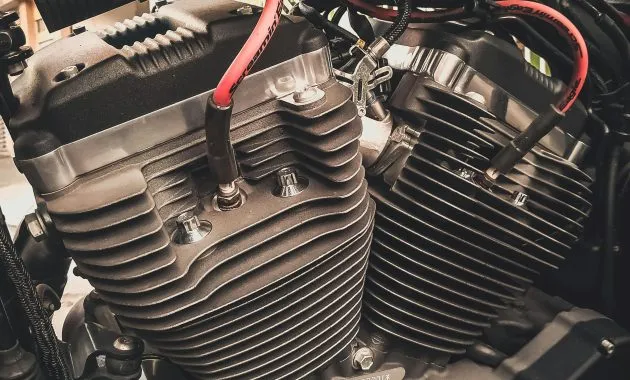Multymeter.com-Electrical Engineering: The spark plug is an important component in the ignition system of an internal combustion engine. The Spark Plug functions to produce the spark needed to burn the mixture of air and fuel in the engine’s combustion chamber. This combustion produces power that moves the piston and ultimately produces the power needed to run a vehicle or other machine.

Main Functions of the Spark Plug:
- Produces Sparks: The Spark Plug produces a strong electric spark to burn the mixture of air and fuel in the combustion chamber.
- Ensures Efficient Combustion: A properly functioning Spark Plug will ensure perfect combustion, thus producing optimal power and reducing harmful exhaust emissions.
Spark Plug Components
The spark plug consists of several main components, including:
- Center Electrode: A metal rod located in the center of the spark plug and functions to conduct electric current.
- Insulator: A ceramic material that surrounds the center electrode and functions to prevent electric current from leaking.
- Metal Shell: The outer part of the spark plug made of metal and functions to protect the internal components of the spark plug.
- Ground Electrode: An electrode located at the bottom of the spark plug and functions as a spark plug.
Types of Spark Plugs:
There are various types of spark plugs available, each with different characteristics and uses. Some common types of spark plugs include:
- Standard Spark Plugs: Spark plugs with a center electrode made of copper or nickel.
- Platinum Spark Plugs: Spark plugs with a center electrode coated with platinum, making them more durable and producing a stronger spark.
- Iridium Spark Plugs: Spark plugs with a center electrode made of iridium, a very strong and heat-resistant metal. Iridium spark plugs have a longer service life and produce better sparks.
Spark Plug Replacement:
The spark plug needs to be replaced periodically according to the vehicle manufacturer’s recommendations. Regular spark plug replacement will ensure optimal engine performance, reduce fuel consumption, and prevent damage to other components.
6 Types of Spark Plugs with their advantages and disadvantages:
The spark plug is essential for igniting the fuel-air mixture in the engine. Different types offer varying performance, durability, and efficiency.
- Copper Spark Plug:
Description:The spark plug is an important component in the ignition system of an internal combustion engine. The Spark Plug functions to produce the spark needed to burn the mixture of air and fuel in the engine’s combustion chamber. This combustion produces power that moves the piston and ultimately produces the power needed to run a vehicle or other machine.
Main Functions of the Spark Plug:
- Produces Sparks: The Spark Plug produces a strong electric spark to burn the mixture of air and fuel in the combustion chamber.
- Ensures Efficient Combustion: A properly functioning Spark Plug will ensure perfect combustion, thus producing optimal power and reducing harmful exhaust emissions.
Spark Plug Components
The spark plug consists of several main components, including:
- Center Electrode: A metal rod located in the center of the spark plug and functions to conduct electric current.
- Insulator: A ceramic material that surrounds the center electrode and functions to prevent electric current from leaking.
- Metal Shell: The outer part of the spark plug made of metal and functions to protect the internal components of the spark plug.
- Ground Electrode: An electrode located at the bottom of the spark plug and functions as a spark plug.
Types of Spark Plugs:
There are various types of spark plugs available, each with different characteristics and uses. Some common types of spark plugs include:
- Standard Spark Plugs: Spark plugs with a center electrode made of copper or nickel.
- Platinum Spark Plugs: Spark plugs with a center electrode coated with platinum, making them more durable and producing a stronger spark.
- Iridium Spark Plugs: Spark plugs with a center electrode made of iridium, a very strong and heat-resistant metal. Iridium spark plugs have a longer service life and produce better sparks.
Spark Plug Replacement:
The spark plug needs to be replaced periodically according to the vehicle manufacturer’s recommendations. Regular spark plug replacement will ensure optimal engine performance, reduce fuel consumption, and prevent damage to other components.
6 Types of Spark Plugs with their advantages and disadvantages:
The spark plug is essential for igniting the fuel-air mixture in the engine. Different types offer varying performance, durability, and efficiency.
- Copper Spark Plug:
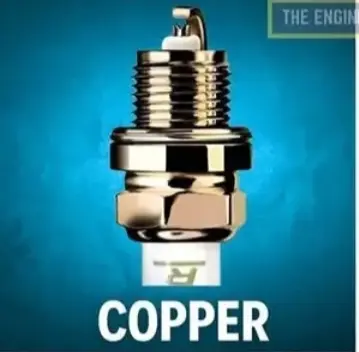
Description: Copper spark plugs have a solid copper core with a nickel alloy electrode.
—> Advantages:
◉ Excellent thermal conductivity, allowing for better heat dissipation.
◉ Ideal for older engines and high-performance applications.
◉ More affordable than other types.
—> Disadvantages: Wears out faster due to the soft nickel alloy.
- Platinum Spark Plug:
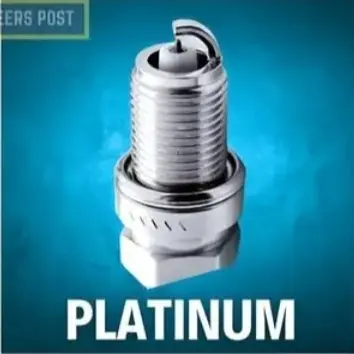
Description: It has a platinum disc on the center electrode, which lasts longer than copper.
—> Advantages:
◉ Longer life (up to 100,000 miles).
◉ Better fuel efficiency and performance.
◉ Produces a steady spark for cleaner combustion.
—> Disadvantages: More expensive than copper plugs.
- Iridium Spark Plug:
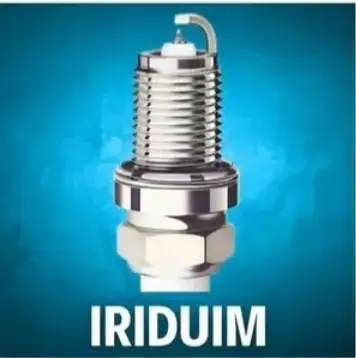
Description: Made with iridium-tipped electrodes, which are harder and more durable than platinum.
—> Advantages:
◉ Ultra-long life (often over 120,000 miles).
◉ Better ignition efficiency and performance.
◉ Requires less voltage, reducing strain on the ignition system.
—> Disadvantages: Higher cost.
- Double Spark Plug
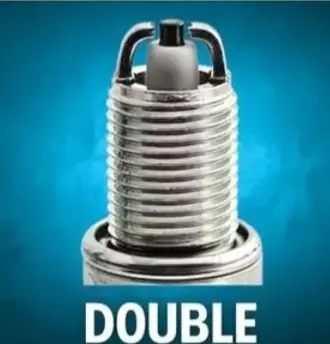
Description: Features two ground electrodes instead of one.
—> Advantages:
◉ Increased durability and efficiency.
◉ More consistent spark distribution.
—> Disadvantages: Slightly more expensive than single electrode plugs.
- Triple Electrode Spark Plug:

Description: Has three ground electrodes for improved spark performance.
—> Advantages:
◉ Increased longevity.
◉ Increased combustion efficiency.
—> Disadvantage: Higher cost.
- Quadruple Electrode Spark Plug:

Description: It has four ground electrodes, offering maximum longevity.
—> Advantages:
◉ Very durable.
◉ Optimizes combustion and reduces emissions.
—> Disadvantages: Expensive and may not provide significant performance benefits in all engines.
Conclusion:
The spark plug is a critical component in the ignition system of an internal combustion engine. The function of the spark plug is to produce the spark required to ignite the air-fuel mixture. Regular replacement of the spark plug will ensure optimum engine performance and prevent damage to other components. Copper spark plugs have a solid copper core with a nickel alloy electrode.***

